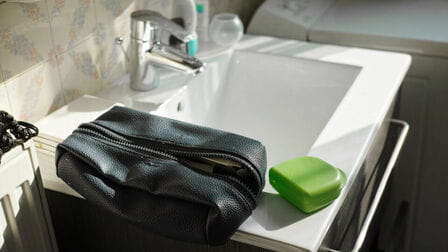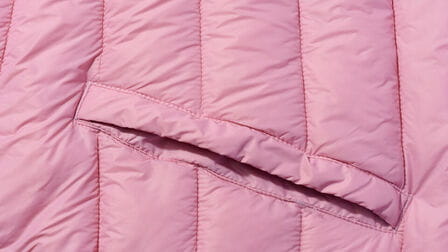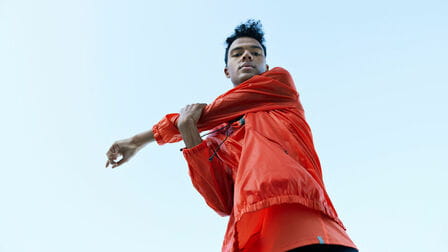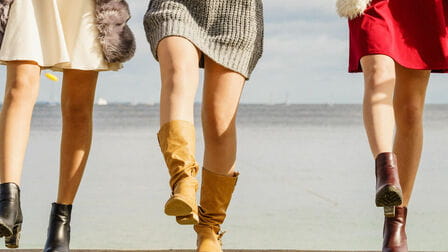A rain jacket is a common go-to item for rainy weather. However, rain jackets aren't always the most stylish option. They can also be bulky and restrictive to move in. Fortunately, there are plenty of alternatives to choose from if you want something different to keep you dry.
Waxed Cotton Jackets
Waxed cotton jackets are a timeless and stylish choice for rainy weather. The waxed coating makes the cotton fabric water-resistant while still being breathable.
Advantages of Waxed Cotton Jackets
- Water-resistant and windproof - The wax coating causes water to bead up and roll off the surface of the fabric. This helps keep you dry in light to moderate rain. The wax also blocks wind from penetrating the jacket.
- Breathable - Unlike rubberized rain jackets, waxed cotton is still breathable. This prevents you from overheating on warmer rainy days.
- Stylish and versatile - Waxed cotton jackets have a classic, rugged look. They can be dressed up or down for many occasions. The style works well for both men and women.
- Durable - Waxed cotton is a sturdy, long-lasting fabric. With proper care, a waxed cotton jacket can last for years. The wax finish can also be reapplied if it starts to wear off.
Disadvantages of Waxed Cotton Jackets

- Not completely waterproof - While waxed cotton repels water, it is not 100% impervious like rubber or plastic. In heavy rain, moisture can still seep through the fabric. Waxed cotton is ideal for light rain but not downpours.
- Can feel stiff or sticky - Brand new waxed cotton may feel a bit stiff and sticky until it is broken in. It softens up over time but still may feel less pliable than other fabrics.
- Requires extra care - Dry cleaning is recommended to keep the wax coating intact. Waxed cotton shouldn't be machine washed or dried. Spot cleaning is the best method for stubborn stains.
- Not ideal for cold climates - Waxed cotton provides limited insulation. In very cold rain, you may need an extra warm layer underneath or a heavier jacket on top.
When to Choose a Waxed Cotton Jacket
Waxed cotton jackets are great for:
- Spring and fall rains
- Areas with mostly light precipitation
- Versatile layering piece for variable weather
- Times when you want a stylish, rugged look
Overall, waxed cotton is a good rain jacket alternative when you need moderate weather protection without overheating. It provides better breathability than plastic or rubber raincoats. Just be aware that it has limits in heavy rain.
Trench Coats
Another stylish jacket choice for wet weather is the classic trench coat. Trench coats have a heritage of keeping wearers dry since their creation as military rainwear.
Benefits of Trench Coats
- Waterproof - Trench coats are made from waterproof fabrics like rubberized cotton, poplin, or leather. These materials cause rain to bead up and run off.
- Breathable versions available - While original trenches were rubber, many modern ones use breathable fabrics like poplin. This prevents getting too hot.
- Timeless style - Trenches have an elegant, classy aesthetic that has remained popular for decades. Their belted silhouette flatters most body types.
- Wind protection - The long overlap of fabric provides excellent shielding from wind gusts on blustery rainy days.
- Adjustable fit - Buckles, ties, and adjustable straps allow you to customize the fit. This accommodates fluctuating body shapes and layers.
- Good length - Trenches hit around the knee or below. This helps keep more of your legs dry compared to shorter jackets.
Limitations of Trench Coats
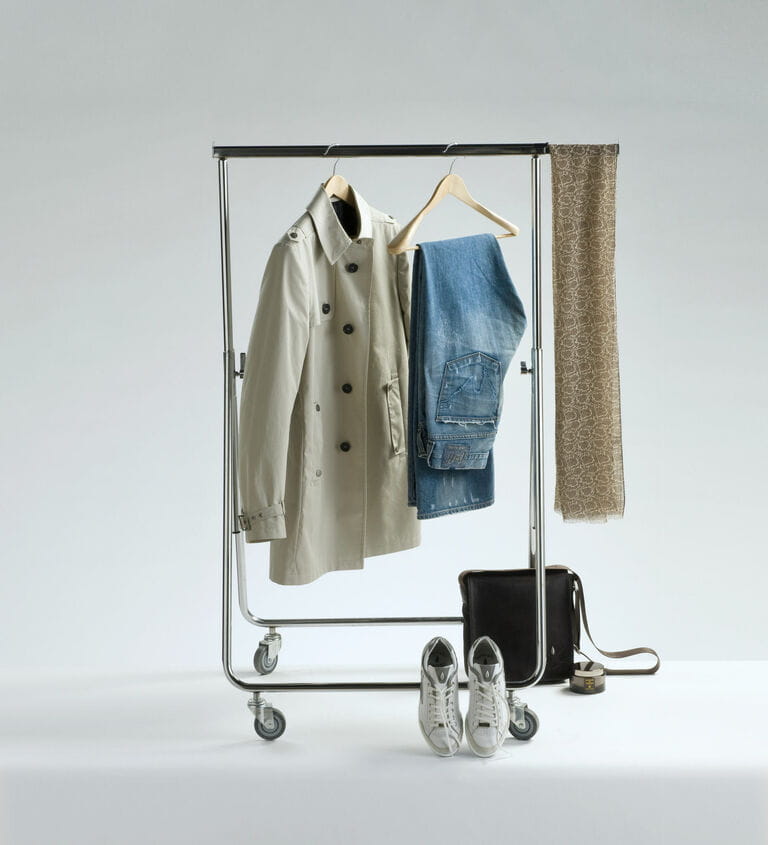
- Can be heavy - Traditional rubberized cotton trenches weigh several pounds. Newer poplin styles are lighter but still bulkier than packable rain jackets.
- Not very packable - The long, belted design prevents easy folding up to stow in bags. Trenches take up more space when not being worn.
- Can feel restrictive - Belted trenches limit stride length when walking fast. Some find the classic double-breasted style too formal or stuffy.
- Requires care - Trench coats need special cleaning methods to maintain water resistance and prevent damage. Home washing machines can degrade the fabric.
- Not suited for heavy rain - While trenches shed light precipitation, heavy downpours may overwhelm the fabric. Best for short exposures or light drizzle.
When to Go For a Trench Coat
Trench coats work well in these situations:
- Going for a refined, elegant look
- Walking short distances in rain
- Climates with occasional light rain
- Times when you want wind protection too
Trench coats make a stylish rain jacket substitute if you don't need robust weather protection. Their slim fit and design keep you dry and looking sharp in drizzle.
Anoraks
For casual rainy weather, an anorak jacket is a good choice. Anoraks are known for being lightweight, waterproof, and high-functioning.
Pros of Anoraks
- Waterproof and windproof - Anorak fabric is tightly woven and often coated to prevent moisture and wind from penetrating. Sealed seams add further weather protection.
- Breathable - Anoraks made from modern materials like Gore-Tex are breathable as well as waterproof. This prevents interior condensation and stuffiness.
- Versatile protection - Hooded anoraks keep your whole upper body and head dry. Some designs extend nearly to the knees for more coverage.
- Comfortable fit - Simple pullover design, elastic cuffs, and adjustable hems create a relaxed but active fit. Makes it easy to layer underneath.
- Lightweight - Anoraks can fold down small for easy packing. Synthetic fabric is lighter than natural materials when wet. Easy to carry just in case.
- Hides stains - Dirt and mud are less visible on anorak fabric. Shaking them off restores the clean look.
Downsides of Anoraks

- Less formal style - The casual parkas are not suitable for finer occasions. Best for activities and casual wear rather than business contexts.
- Can be stuffy - Poorly designed anoraks may lack enough ventilation, causing interior fogging up and moisture buildup.
- Crinkly fabric - Waterproof coatings can make the fabric stiff and noisy when moving. Improved fabrics reduce this issue.
- Limited warmth - Thin and breathable materials don't provide much insulation in cold conditions. Best paired with warm layers in frigid weather.
- Vulnerable closures - Zippers, snaps, and velcro can degrade or fail if not high-quality. Check for reinforced closures.
Appropriate Uses for Anoraks
Anoraks excel in these rainy day scenarios:
- Active pursuits like hiking, cycling, or sports
- Informal occasions and casual wear
- Mildly cool climates with frequent rain
- As a lightweight emergency rain shell
- Jobs requiring all-day weather protection
For casual and active rainwear, an anorak is hard to beat. Their specs balance weather protection, breathability, and freedom of motion.
Parkas
Parkas provide heavy-duty shielding from cold rains. Their thick, insulating builds make them a go-to for frigid precipitation.
Strengths of Parkas
- Extreme weather protection - Parkas are made with tightly woven, coated fabrics that seal out rain, wind, and snow. Fur or synthetic fur trims further block drafts.
- Warm insulation - Down, synthetic fill, or quilted interiors keep you toasty despite chilly external temps. High loft traps heat and dries quickly.
- Coverage from elements - Parkas fully cover vulnerable areas with hoods, long hems, and extendable sleeves. High collars and adjustable closures seal out the exterior climate.
- Utility focused features - Large pockets, drawstrings, removable liners, and ventilation zippers adapt the parka to changing conditions.
- Durability - Heavyweight ripstop or Oxford fabrics hold up to abrasion and tearing on rocky terrain. Metal hardware resists corrosion and damage.
- Style adaptability - From refined city parkas to rustic trail models, various stylings integrate parkas into different aesthetics. Many avoid a bulbous look.
Weak Spots of Parkas

- Bulk and weight - Parkas' heavy fabric and thick insulation add noticeable mass. Can feel cumbersome if mobility is important.
- Overheating risks - All that insulation makes ventilation crucial. Easy to get too warm indoors or when active outside in parkas.
- Noise and stiffness - Coatings like Gore-Tex can be crinkly and stiff until worn in over time.
- High cost - With advanced fabrics, extensive features, and technical construction, parkas are pricier investments.
- Oversized fit - Parkas run large by design to fit layers underneath. Can overwhelm smaller frames if not sized properly.
- Not for mild climates - Overkill for all but the very coldest and wettest regions. Other jackets work as well or better for moderate conditions.
Best Uses for Parkas
Parkas excel in these cold weather contexts:
- Frigid, windy regions like the Arctic
- Active winter sports like mountaineering or snowboarding
- Extended outdoor excursions in rain, snow, or sleet
- As an overcoat alternative in very cold climates
- Outer shell over lighter jackets in variable conditions
For seriously cold and wet weather, few jackets provide more complete protection than a parka. Their insulating and sealing capabilities can be a lifesaver where other jackets fall short. Just balance warmth and bulk needs.
Bomber Jackets
Bomber jackets beat the rain through their sleek, lightweight versatility. Their trim, athletic cuts serve up style and agility.
Advantages of Bomber Jackets
- Water-resistant outer shell - Nylon, polyester, or vinyl materials cause water to bead up and roll off while blocking wind.
- Breathability - Unlined bombers allow good interior airflow. Lined versions use thin mesh for moisture ventilation. Prevents interior fogging.
- Sleek form-fitting shape - Close fit mirrors athletic physique without impeding movement. Works for narrow and wider frames.
- Lightweight - Light nylon or polyester weighs little when dry or wet. Easy to pack up when not worn.
- Flexible and mobile - Short waist length, stretch fabrics, and raglan sleeves allow a full range of motion.
- Stylish versatility - Bombers integrate into dressy, casual, and retro looks seamlessly. Gives a sharp profile.
Weaknesses of Bomber Jackets

- Limited weather protection - Thin nylon offers just basic water resistance for mild rains. Any exposed skin or openings will get wet.
- Minimal insulation - Unlined bombers are poor insulators. Lined versions offer marginal warmth at best. Need added layers when cold.
- Can tear more easily - Lightweight materials sacrifice durability. Seams, fabric, and closures must be reinforced.
- Restricted adjustability - Simple design limits customization of fit. Those in between sizes may have a looser fit.
- Cropped coverage - Waist-length cut leaves upper thighs and below uncovered. Needs pairing with long pants or layers.
- Delicate exteriors - Shiny fabrics show oil, dirt, tears, and spills readily. Vinyl bombers easily crease when packed.
When To Go For a Bomber Jacket
Bombers make good rain layers in these situations:
- Mild rainy climates with limited precipitation
- An outer shell over insulating layers in chillier weather
- Times when light weight and packability are essential
- Urban commuting by foot, bike, or public transit
- When you want a sharp, streamlined look on top
For occasional light rains, bombers combine protection and athletic mobility. Just be ready to add insulating layers when cold. Their lightweight designs prioritize freedom of movement over weather resistance.
Rain Capes
Rain capes are an intriguing throwback option for rainy days. Their unique poncho design provides flexibility and hands-free coverage.
Advantages of Rain Capes
- Waterproof materials - Capes use fabrics like heavy-duty nylon that block external water from soaking through.
- Full arm mobility - Open sides allow your arms to move freely for activity. Generously cut to reach your wrists when extended.
- Hands-free coverage - Capes drape over your front and back while keeping your hands uncovered. Convenient for checking phones or holding items.
- Adjustable fit - Drawstrings, zippers, buttons, and snap straps allow you to customize coverage and ventilation.
- Easy on and off - Open sides make throwing on and taking off a cape fast and simple. No sleeves or complex closures.
- Compact size - Basic squareish shape with no sleeves allows capes to pack down small into bags or pockets.
Downsides of Rain Capes

- Limited leg coverage - Capes protect your upper body but leave lower legs and thighs exposed to rain. Need separate leg coverings.
- Breezy design - Open sides leave you more exposed to wind gusts. Some flapping and billowing can occur.
- Unusual style - Uncommon poncho look draws attention. Not as seamless to integrate into outfits.
- Limited waterproofing - Heavy downpours can overwhelm the fabric, sopping through the cape. Best for light precipitation.
- Restricted arm motions - Reaching upwards or outwards may expose your sides or lift the cape. Raising arms can pull it up.
- Loose sizing - Capacious shape may not flatter those with narrower builds. Excess fabric catches wind.
When To Go For a Rain Cape
Rain capes work well for:
- Very light showers and drizzle
- Climates with brief, passing rains
- Covering dress clothes when commuting
- Keeping hands and arms free for activities
- Frequent putting on and taking off
If you want minimalist wet weather gear that preserves arm mobility, rain capes are a handy choice. Just pair them with waterproof legwear and hats for fuller coverage when needed. Their poncho design offers flexibility lacking in most raincoats.
Umbrellas
Sometimes the easiest way to stay dry is carrying an umbrella. Compact and portable, they provide personalized rain protection that travels with you.
Pros of Umbrellas
- Highly portable and packable - Smaller folding umbrellas tuck neatly into purses, bags or pockets. Larger ones have carrying cases.
- Adaptable coverage - Umbrellas can be tilted, spun, angled or moved to block rain from any direction. Keep them low to cover legs.
- Hands-free convenience - Lets you use phones, carry bags and items, or hold rails without juggling.
- Instant rain protection - Umbrellas can be quickly opened at the first drops. Retractable versions spring up with the push of a button.
- Lightweight - Modern umbrella materials like polyester are light enough for easy carrying. No heavy fabric.
- Infinite styles - Umbrellas come in unlimited colors and prints to show personality. Unique handles and ribs add flair.
Weak Points of Umbrellas

- Vulnerable to winds - Strong gusts can invert umbrellas or turn them inside-out. Difficult to manage in blustery conditions.
- Limited coverage - Only shields what's directly underneath, so angling and positioning are required. Legs and feet remain exposed.
- Water runoff - Points and edges can drip collected water downward when closing or lowering the umbrella.
- Tight interior space - Multiple people can crowd under a large umbrella, but individual models only accommodate one.
- Movement impediment - Having to hold and manage an open umbrella affects pace and mobility.
- Prone to breakage - Umbrella ribs and tips frequently get bent or snapped by heavy winds.
When Are Umbrellas Most Useful?
Umbrellas excel in these circumstances:
- Brief urban commutes by foot
- Remaining mobile in light, passing showers
- Keeping dressed up ensembles dry
- Shielding yourself and another person
- Having free hands to use devices, hold beverages, etc.
For occasional rainy days, umbrellas offer customizable protection that's simple to tote around. They're an easy accessory to tuck in your bag and bust out when needed.
Conclusion
While rain jackets are a popular default choice, they're far from the only way to stay dry. Waxed cotton jackets, trench coats, anoraks, parkas, bomber jackets, rain capes, and umbrellas each offer their own blend of style, features, and performance advantages. Consider your budget, needs for weather protection, mobility, insulation, and aesthetics to pick the option that's right for you. Having versatile rainwear alternatives makes it easier to stay comfortable and look great in any weather.


